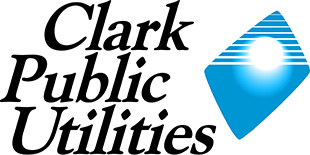
Left to right: Erin Chatel, Erin Thackray, Cat Dewlen, Garrett Licata-Portentoso
Photo credit: Stephanie Frisch
StreamTeam Update
This fall, four new AmeriCorps Volunteers joined the Clark Public Utilities StreamTeam! Erin Chatel, a Vancouver local is the Nursery Specialist this season. Garrett Licata-Portentoso traveled from Washington D.C. to be our Invasive Species Specialist. Erin Thackray from Bainbridge Island is this year’s Restoration Specialist. Cat Dewlen (me!) is the Education and Outreach Specialist. I moved here from Minnesota, but am originally from Georgia. I know we are all looking forward to meeting the dedicated volunteers at upcoming events. If you see us at an event, please feel free to introduce yourself and let us know how long you’ve been involved in planting trees for StreamTeam!

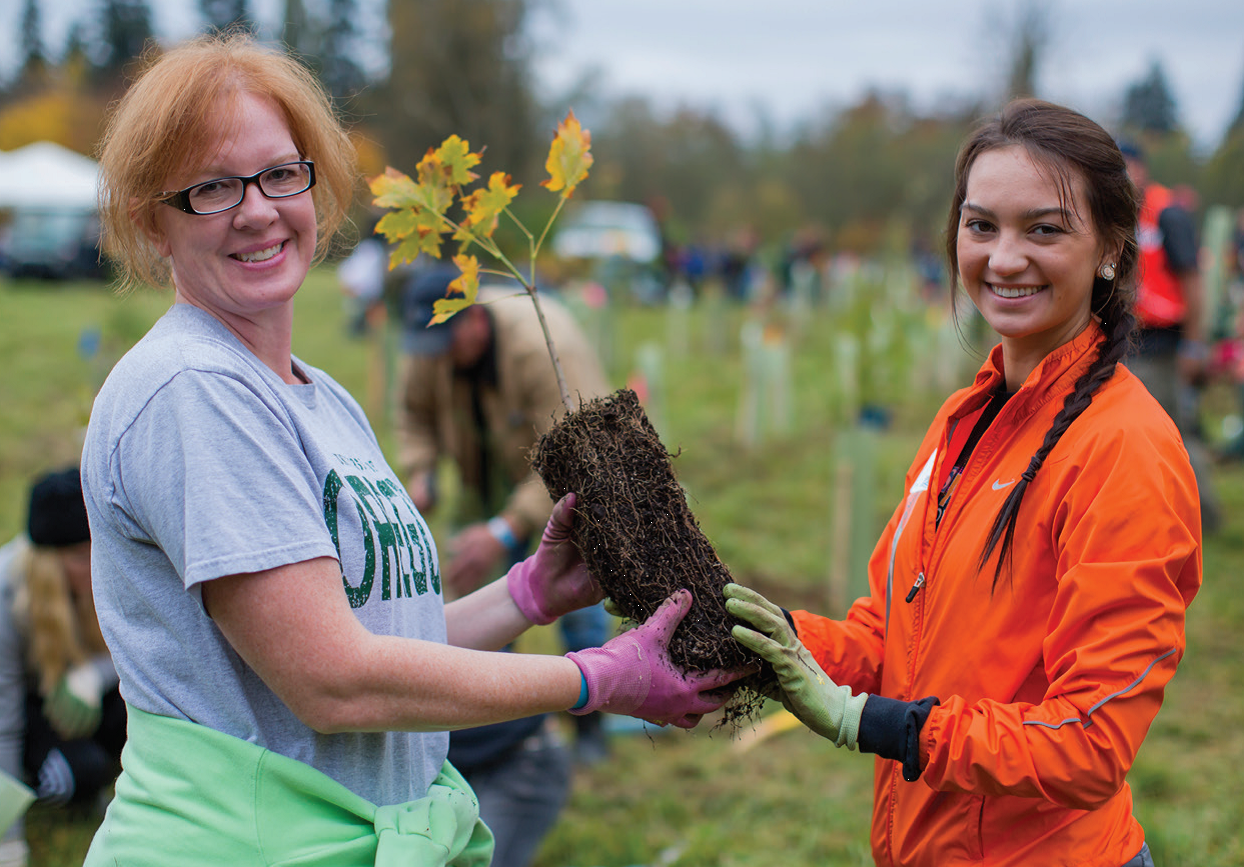
Upcoming Events
StreamTeam Tree Plantings & Pottings
Registration for Make a Difference Day is full! Thank you to everyone who is planning on coming out on October 28th to plant trees and celebrate StreamTeam’s Million Tree Milestone. If you missed a spot at Saturday’s event, don’t worry, we have several smaller tree plantings and potting events planned over the next few months!
Sign up for info HERE on November and December tree plantings.
Click to view the 2023–24 StreamTeam Event Schedule
Composting Workshops
On November 1st attend Composting Field Training & Instruction. This workshop includes: Weed identification, types of composting systems, how to build a hot compost pile, how to turn a compost pile and how to use compost. This training will be outdoors, so dress for the weather.
11/01 Composting Field Training & Instruction-Public Workshops (clarkcountycomposts.org)
Are you already a composting pro? Join Clark County Composting via Zoom to learn some advanced composting techniques, including new technology systems like Lomi. This workshop is on November 1st from 7–8 p.m.
11/01 Advanced Composting Techniques-Public Workshops (clarkcountycomposts.org)
Other Opportunities
Native Wildflower Seed Bomb Workshop
Learn about wildflower ecology and how to make seed bombs to help promote biodiversity in our area. This event is on November 11th from 10:30 a.m.–noon at Taborspace in Portland. The cost of admission is $20 for adults and $10 for children.
11/11 Native Wildflower Seed Bomb Workshop (Organized by Backyard University)
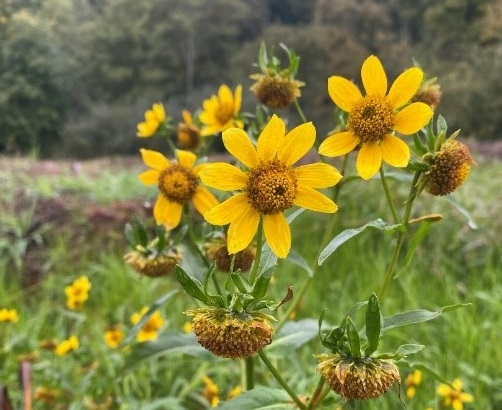
Photo Credit: Matthew Solberg
Native Plant Spotlight: Nodding bur-merigold – Bidens cernua
Nothing brightens an overcast autumn morning quite like the Nodding beggarticks. This flowering annual is an abundant flower found in wetlands. Keep an eye out for it along bodies of water. You may see it flowering in the shallows or along the edge of water, August–October.
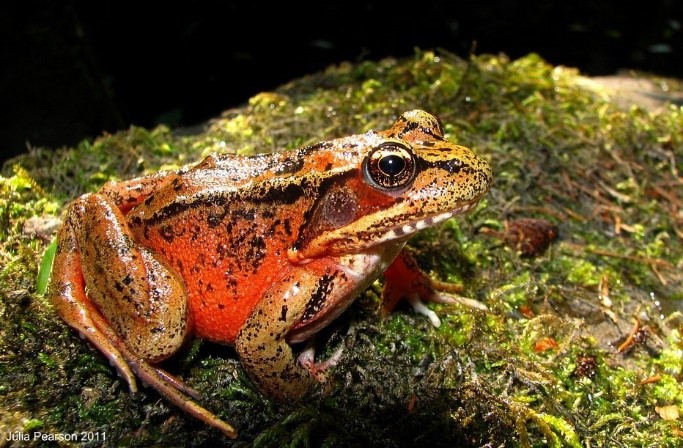
Photo Credit: Julia Pearson
Picture Label: Northern red-legged frog (Rana aurora)
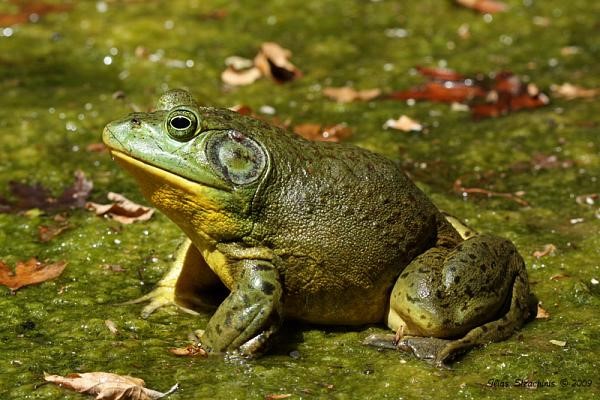
Photo Credit: Ilias Strachinis
Picture Label: Bull frog Lithobates catesbeianus
Creature Feature: Northern red-legged frog – Rana aurora
Have you ever wondered why stories often depict frogs among mushrooms? As fall’s moisture welcomes a myriad of mushrooms, you’ll also find a seasonal abundance of amphibians. It’s no coincidence, these organisms both love their moisture!
So … what exactly is an amphibian?
While not true for all amphibians, most species lay gelatinous (think jelly) egg masses in water and undergo metamorphosis from a tadpole stage.
Frogs, toads, salamanders and our local rough-skinned newts also have semipermeable skin. This means they’re able to absorb moisture through their skin. Some species of salamanders even lack lungs, breathing entirely through their skin! This is why amphibians are a good indicator of stream health. It’s also something to be aware of when holding these sensitive critters. With their semipermeable skin, amphibians are sensitive to the products we put on ourselves or the land.
One local amphibian that stands out is the Northern red-legged frog. These large bodied frogs ae often confused with invasive bull frogs.
Both species have strong limbs, with webbing on their hind feet. Their body size and webbed feet separate them from our small Pacific tree frogs (also known as chorus frogs). So how can you distinguish a Northern red-legged frog from a bull frog? Look for reddish coloring on their inner thighs when they hop away. They also have pale yellow-golden lips!
I can see you’re ready for the next level, the herpetologist tip: If you’re able to get a photo of a large frog, check the size of their ear membrane, called the tympanum (the circle by their eye). Bull frogs have a large tampanum, the same size as their eye or larger. Whereas, the Northern red-legged frog’s tampanum is smaller than its eye. Alright, I’ve given you every tip! Go forth and frolic with the frogs.
This time of year you can find them moving on damp mornings or wet overcast days. Look along creeks, dry riverbeds and wet forest floors. You might strike gold!

Conservation Tips
This month’s conservation tip is a simple reminder to turn off the tap while brushing your teeth, washing dishes or cleaning veggies. This is a really easy way to conserve water while also saving money on your water bill. If you run the water while you are brushing your teeth, you could be letting two to three gallons of water down the drain.
By turning off the tap while you hand wash your dishes, you can save about 22 gallons! That’s a lot of water! If you’re not already in the habit of turning off the tap, try this easy tip to conserve extra water.
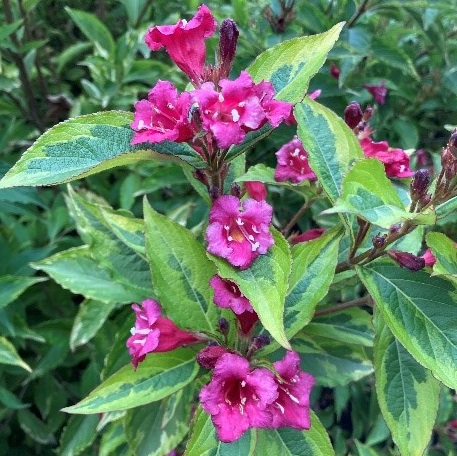
Photo credit: Cat Dewlen
What’s Bloomin’ in the Pollinator Garden?
Red Prince Weigela
Even though it’s October, here at the Clark Public Utilities Operations Center, the pollinator garden is still attracting bees and hummingbirds with its many blooms. One of these plant still working hard to feed pollinators is red prince weigela. Native to East Asia, this deciduous (a plant that loses its leaves annually) shrub can grow up to 9 feet tall and wide. Their bright funnel-shaped blossoms can come in a range of reds and pinks and are sure to catch the eye of local hummingbirds! Though they bloom heavily in the late spring throughout the summer, they can re-bloom in the late summer or early fall with a less abundant number of flowers. These dense-growing shrubs could be a great option for a hedge. Just be sure to prune them after they’re done flowering to help them keep their shape. Plant in full sun for bright foliage color and lots of blooms.
